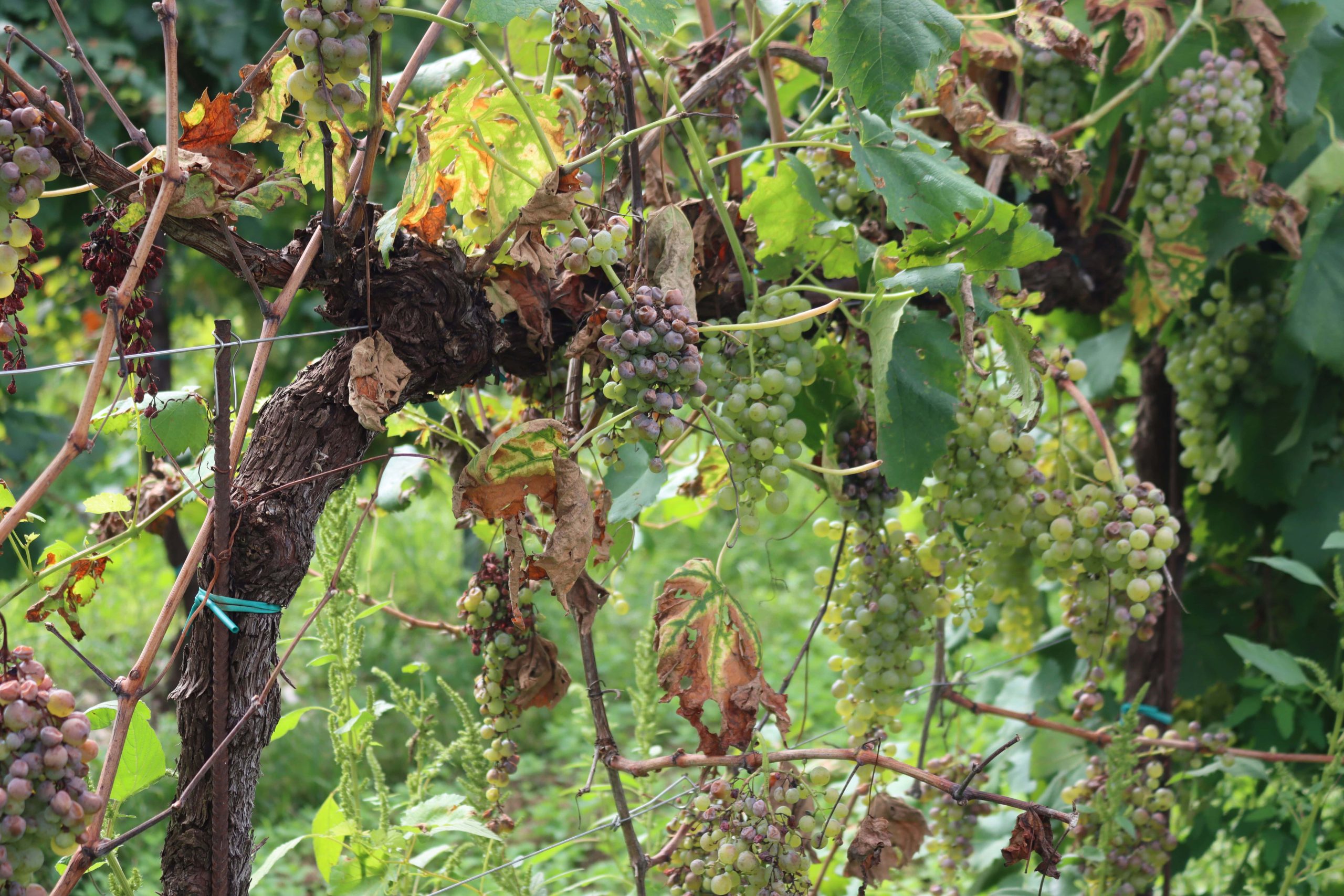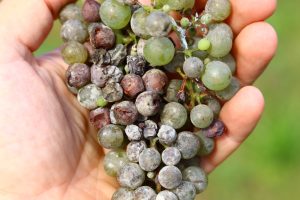This year 2024, French vineyards are experiencing an unprecedented level of powdery mildew pressure. Vines were hit by early contaminations starting in late March, owing to early phenology and mild, wet weather. Such an early onset of attack is exceptional in this regionWeather conditions in April and May, marked by heavy rainfall, exacerbated the situation, making disease management particularly difficult. While some regions are beginning to benefit from drier weather, allowing better control of the disease, the importance of vigilance and effective application of treatments remains crucial to limit damages.
Downy mildew, a significant impact on plants and yields
Downy mildew, caused by the pathogen Plasmopara viticola, attacks various parts of the vine: leaves, bunches and berries. This disease has several negative effects:
It reduces the leaf surface used for photosynthesis. Affected leaves exhibit oily yellow spots on their upper surface and white mold on their underside.
It damages the berries turning them brown and crushed, consequently decreasing the quality and yield of the harvest.
It weakens the shoots, preventing shoot development and wood formation, making winter pruning more difficult. These combined effects reduce the vine’s reserves, compromise berry growth and make the plants more vulnerable.
What conditions are conducive to risk?
The development of downy mildew is favoured by specific climatic conditions:
Ideal temperatures for the spread of the disease are between 20 and 25°C with a humidity level of 85% or more.
Prolonged rainfall, dew and morning fog exacerbate the risk of contamination.
Periods of vigorous vine growth, when new shoots are most vulnerable, are particularly critical. In addition, certain grape varieties, such as Cabernet Franc, Cabernet Sauvignon, Chardonnay and Merlot, are particularly sensitive to mildew.

Appropriate treatment and prevention methods
Copper-based fungicides and specific systemic products are commonly used to combat downy mildew. It is essential to alternate the types of fungicide used to prevent the pathogen from developing resistance. In addition, combining substances with different modes of action and creating spatial heterogeneity in their application helps to prevent the development of pathogen resistance.
Various cultivation techniques can prevent downy mildew, such as pruning to improve air circulation around the plants, removing infected debris to reduce sources of contamination, and ensuring effective drainage to avoid puddle formation. Green pruning eliminates unnecessary shoots and promotes shoot aeration; maintaining a cover crop protects the soil and reduces water or contaminated soil splashes. Trellising and leaf removal also improve aeration. Finally, controlling plant vigour by limiting fertilization prevents excessive growth, which is conducive to powdery mildew.
Protecting vines effictively
For an effective protection against downy mildew, it is essential to follow reliable weather forecasts when planning treatments, to avoid water stagnation around the plants, and, in years with high disease pressure, to ensure a continuous phytosanitary protection without excessively long intervals between treatments. It is also important to regularly check the functionality and efficiency of sprayers, and to use decision-support systems such as Vintel to receive risk alerts on downy mildew and other diseases
Proactive, well-informed management is key to effective powdery mildew control. By combining different strategies, winegrowers can protect their vines and ensure the quality of their harvest inspite of the challenges posed by the unfavourable climate conditions of 2024.





